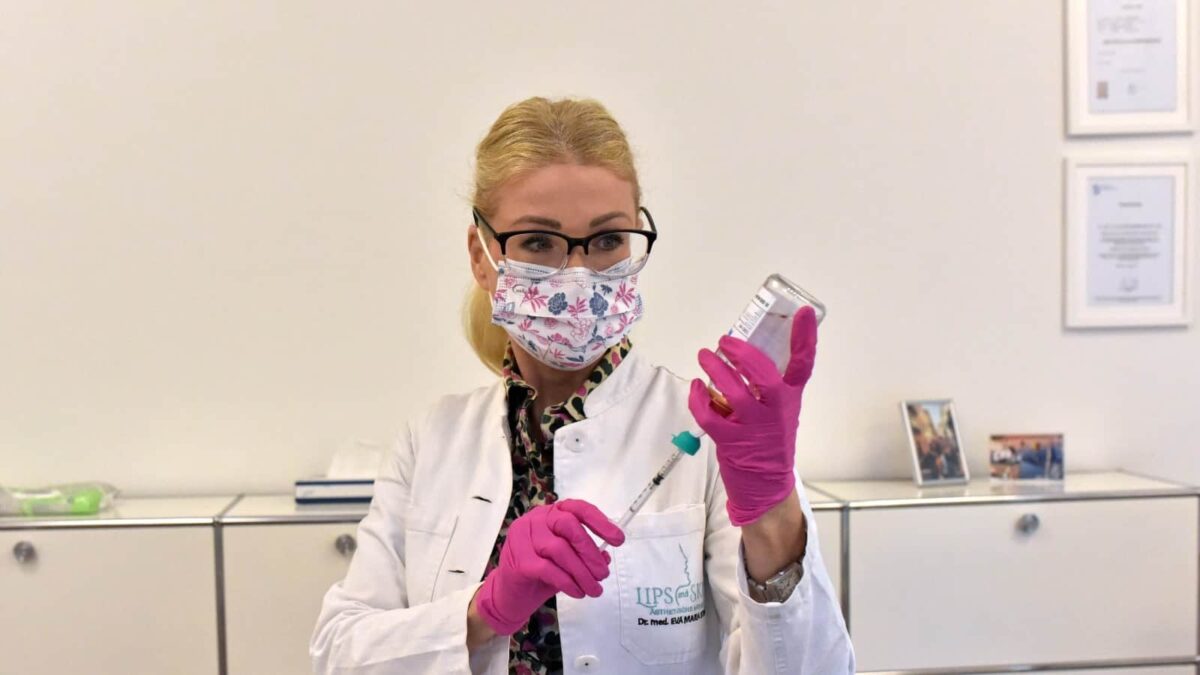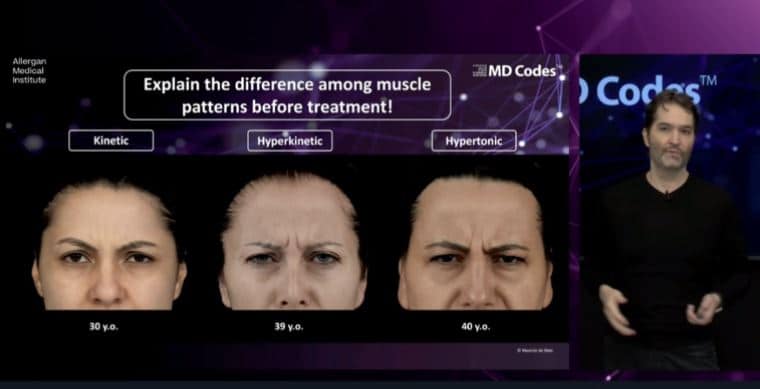These are The Topics:
Lackluster Results of Botox: When the Magic Fades Away
Unlocking the Reliability of Botox Effects: A Game-Changer in Aesthetics
Unveiling the Truth: Addressing Criticism Towards the Doctor’s Role in Botox Treatment
Understanding Botox Resistance and Its Impact on Treatment
Botox Isn’t Working for Me – What Are My Options?
FAQ: Understanding How Botox Works and When to Expect Results
Unlocking the Reliability of Botox Effects: A Game-Changer in Aesthetics
Promising Results: High Satisfaction Rates and Positive Feedback
The Good News First: The finding that Botox remains ineffective is rare. On the contrary, the therapy even shines with high satisfaction rates of 80-90%. Studies confirm this again and again. For instance, one study suggests that 9 out of 10 people treated with Botox are satisfied with the results and still feel significantly better four months after treatment. Only a few subjects reported negative experiences with Botox. Far more were convinced by the effect and would definitely recommend Botox.
Positive Effects Beyond Aesthetics: Botox and Improved Well-being
Another study proves that people who had their forehead treated with Botox were significantly happier afterward than the control group. This coincides with the well-documented suspicion that Botox can help with depression. Can these studies always be generalized and in every aspect? Maybe not. But the conclusion remains: Botox is usually very reliable.
Disappointing Results: Understanding Botox Treatment Failures
And yet, there are instances where Botox doesn’t show any effect. Or that the effect at least falls short of expectations. Patients are then rightly disappointed. Not least for financial reasons: costs of several hundred dollars are not met with a result that would be worth this effort.
Frustration and Hope: The Impact of Botox Treatment Failures
But often it’s about more than just money or a younger appearance: those who use Botox for certain ailments, such as spasms, dystonias, or migraine and bruxism, hope for a genuine increase in their well-being. Moreover, many patients have to overcome their fears of Botox first. The frustration is then all the greater when the therapy fails and the hoped-for effect does not occur. And unfortunately, in neurological therapy, Botox frequently does not work as hoped.
Managing Expectations: Botox Treatment for Chronic Migraines
One example: With the approval of Botox for chronic migraine, it was clear that the therapy would fail in a relatively high percentage of patients. However, you usually only know whether you are such a patient in retrospect. And with all that we know today about the exact mechanisms behind the Botox effect or don’t know, you can often only say: unfortunately, bad luck!
Realistic Expectations: The Role of the Doctor in Aesthetic Medicine
One of the central tasks of a doctor is to keep the expectations of his patients at a realistic level. And in aesthetic medicine, that is often enough of a challenge. Because one’s own appearance is judged emotionally and expectations of a cosmetic procedure are regularly exaggerated. Furthermore, aesthetic medicine is often accompanied by an overabundance of promises, with many individuals within the field seeking to capitalize on it.
Patience is Key: Understanding the Timing of Botox Effects
The question of when to expect an effect from Botox also contributes to false expectations. Unfortunately, many have become accustomed to having “everything immediately.” But that’s not the case with the effect of Botox. It only sets in after a few days. This has biochemical reasons, which I will go into in more detail at the end of the text.
Understanding Botox Resistance and Its Impact on Treatment
Overcoming Challenges: Exploring Botox Resistance
We have discussed the patient’s high expectations and the doctor’s treatment errors as potential causes for Botox treatment failures. However, now let’s explore a third possible cause for which the doctor is generally not at fault: Botox resistance. This occurs when the patient develops antibodies against Botox, resulting in an immune reaction that inhibits the effectiveness of Botox.
Dispelling Common Misconceptions about Botox Resistance
Botox resistance happens much less frequently than commonly believed and is almost non-existent in cosmetic Botox therapy. The few cases of Botox resistance primarily affect patients undergoing treatment for spasms or dystonias, which require very high doses of the medication. For example, studies with dystonia patients have shown Botox resistance in 3-10% of cases after repeated treatments.
How does Botox resistance occur?
Antibodies Binding to Active Molecules
Botox contains biologically active as well as biologically inactive protein molecules. For Botox to exert its effects, the active proteins must remain intact. However, both types of proteins can be recognized by the immune system as antigens, triggering the production of antibodies. These antibodies bind to the Botox proteins and render them inactive.
If the antibodies bind to molecules that were already biologically inactive, it has no impact on the effectiveness of Botox. However, if the antibodies bind to the biologically active portion of Botox, it blocks its toxic and therapeutic effects.
Recent studies indicate that this blockade can diminish over time. Over a period of 2 to 3 years, the number of antibodies decreases, potentially allowing for successful therapy and the manifestation of Botox’s effects in cases where it previously failed.
Preventing Botox Resistance
The formation of antibodies becomes problematic when Botox is injected in high doses and short intervals. This can be a challenge in neurological therapy, but is unlikely in cosmetic applications.
Administering 50–100 units of Botox every 4–6 months poses a minimal risk for antibody formation. An experienced doctor will take this into consideration and advise against frequent Botox injections in very short intervals (also known as “Botox boosters”). Failure to do so would make the doctor partially accountable for any resulting resistance.
FAQ: Understanding How Botox Works and When to Expect Results
As mentioned earlier, unrealistic expectations contribute to the question of “When does Botox work?” I will now provide a brief FAQ section to explain how Botox works and when its effects become noticeable. This information may help better contextualize the content discussed above.
Botox is a neurotoxin that targets “cholinergic synapses,” which mediate communication between a nerve cell and a downstream cell. This communication occurs through neurotransmitters, with a key neurotransmitter of interest being “acetylcholine.” Botox inhibits the secretion of acetylcholine, thereby interrupting communication between nerve and muscle cells. With this communication disrupted, nerve impulses no longer reach the muscle, resulting in paralysis. This is the basis of Botox’s effectiveness.
After injection, it takes between 24 and 48 hours for the toxin to bind to nerve cells and penetrate them. The process is complex and involves the splitting of the two-part Botox molecule. Only the lighter part, known as the “L-chain,” enters the nerve cell. Inside the nerve cell, Botox cleaves a protein crucial for acetylcholine release, thereby preventing its release.
Consequently, it takes 1–2 days for injected Botox to take effect and for initial muscle paralysis to occur. Some patients notice improvements in their wrinkle appearance from that point onward, but this may not be the case for everyone. Many patients wonder how quickly Botox works and may become anxious after just a few days, especially if it is their first treatment. The time it takes to see the full effects of Botox varies depending on individual factors, particularly the strength and baseline tension of the muscles involved. In my experience, it takes 7–14 days to see the full effects. Men may require slightly longer than women.
Therefore, if you don’t notice any effects after 3, 4, or 5 days, don’t be alarmed. It is normal. However, if after 14 days you still see no results, you should contact your doctor. Usually, a follow-up appointment is already scheduled to address any lack of effect.
In short, no, Botox does not cause long-term effects. The process outlined above for the action of Botox is entirely reversible. The toxin gradually loses its effect until it completely dissipates after 4–6 months. There are no traces or “memory” of Botox left in the body. Therefore, concerns about long-term effects of Botox are unfounded, as confirmed by numerous long-term studies: Botox does not have any long-term effects.
However, muscles can lose strength when they are inactive for a long time. This is a familiar concept for arms and legs. Mimetic muscles are no exception; they also weaken with prolonged immobilization. One could refer to this as a “late-effect of Botox,” but it is only indirectly related to the toxin.

About the author:
Dr. med. univ. Eva Maria Strobl is the owner of LIPS and SKIN Aesthetic Medicine practice in Munich. She is a trained specialist in general medicine (MedUni Vienna) and has over 10 years of specialization in non-surgical aesthetic procedures. She is a member of the German Society for Aesthetic Botulinum Therapy e.V. (DGBT), the German Society of Anti-Aging Medicine e.V. (GSAAM) and of Network Global Health. She publishes regularly on her blog and on DocCheck.


